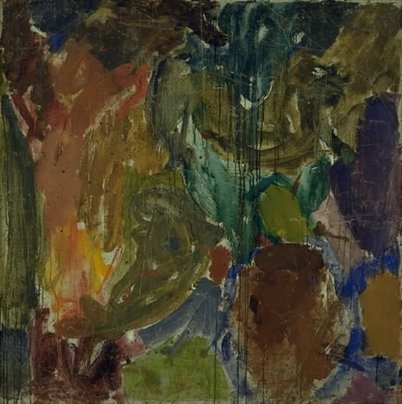Description
The work "Dante and Virgil in the underworld" (1932) by Danish painter Edvard Weie presents a disturbing interpretation of an episode of "The Divine Comedy", the famous work of Dante Alighieri. Weie, recognized for its ability to merge tradition with contemporary elements, achieves here a representation that evokes both the psychological depth and the complex symbology of the Dantesque work. His choice to address a subject so entrenched in the literary tradition of the West not only highlights his scholarship, but also his desire to explore the spiritual journey of the human being.
In it painting, The influence of expressionism is clearly observable through the palette of intense colors and the almost abstract treatment of forms. The predominant tones, which vary from the dark tones of the underworld to the vibrant nuances of the characters' costumes, create a dramatic atmosphere that invites the viewer to enter this gloomy world. The composition, focused on the interaction between Dante and Virgil, is rich in symbolism, representing the guide and the truth search engine on a journey through pain and suffering.
The characters, clearly discernible in the work, are represented with gestures that transmit both Dante's anguish and the serene determination of Virgil. The tension between these emotions is palpable and is accentuated by the way Weie uses space. The background, a nebula and murky representation of the underworld, contrasts with the clarity of human figures in the foreground, which reinforces Dante's internal struggle and its relationship with his guide.
Weie, whose work was mainly developed in an avant -garde context, has an interest in the psychological aspects of its characters, and "Dante and Virgil in the underworld" is no exception. Through the expressive faces and positions of both characters, the deep connection between the suffering of the soul and the hope of redemption is revealed. The choice to represent Virgil, the Roman poet who acts as a guide, becomes an allegory of knowledge and reason in opposition to the uncertainty that Dante represents on his trip.
In addition to the visual and theme depth of the work, it is interesting to consider the historical context in which it was created. Weie, who lived during a period of social and political restlessness in Europe, often addressed in her paintings The search for meaning and the nature of human suffering. This painting, In particular, it can be seen as a reflection on the existential challenges faced by humanity during the 1930s, as well as a meditation on the role of literature and art in the understanding of human pain.
In summary, "Dante and Virgil in the underworld" is not only a testimony of Edvard Weie's talent as a painter, but also a deep dialogue with the literary tradition and an analysis of the human emotional state in search of meaning. His ability to capture the abstract and tangible through his palette and his Brushwork places this work in a remarkable position within the Canon of the Art of the 20th century, marking a bridge between the past and contemporary concerns. This canvas invites deep contemplation and a reevaluation of our own journeys through life.
KUADROS ©, a famous paint on your wall.
Hand-made oil painting reproductions, with the quality of professional artists and the distinctive seal of KUADROS ©.
Art reproduction service with satisfaction guarantee. If you are not completely satisfied with the replica of your painting, we refund your money 100%.

